|
By Jennifer Li Few would argue we live in stressful times. Mix a pandemic with social and political dissension and add the routine anxieties of daily life, and you have a stewpot of stress. Too much stress leads to anxiety, depression, high blood pressure, heart disease, and – well, you get the picture. You can do things to keep the stewpot from boiling over. Here are some simple ways to combat stress. 1. Exercise It may seem like a contradiction... that placing stress on your body can reduce internal stress, but it works. Exercise lowers bad hormones like cortisol and increases good hormones like endorphins, which are proven to improve your mood and help you sleep. Exercise doesn’t have to mean sweaty hours in a gym. Choose something you enjoy. Just an hour in the garden can burn calories, and living in Orlando allows us to garden year-round. Or tackle a project in your yard that you’ve been putting off. Maybe build a rain garden. It’s one of several hot landscaping trends in Orlando to choose from. Biking and walking are also excellent options. You can enjoy the outdoors while combating stress. Yoga is perhaps the best stress reliever. Not only does it entail physical exercise, but it also provides a mental and spiritual boost. 2. Watch Your Intake What you choose to put into your body can worsen stress. At the top of the list is caffeine. On the positive side, it gives you a shot of brain stimulation that increases alertness and reduces drowsiness and fatigue. On the negative side, too much leads to jitters, irritability, confusion, and headaches. If you can’t do without that cup of Joe in the morning, at least limit the number of cups. Watch out, too, for soft drinks – many contain a strong dose of caffeine. Some foods actually reduce stress. Broccoli, whole-grain breads, eggs, fish, chamomile tea, and avocados are a few of them. Here’s something to lift your spirits – chocolate is proven to reduce stress! 3. Turn Over a New Leaf – or Several Modern science is proving what our Victorian ancestors knew by instinct – plants reduce stress. “Interaction with indoor plants may reduce psychological and physiological stress,” according to the Journal of Physiological Anthropology. Plants rid the air of toxins and improve your mood. Aloe vera, English ivy, lavender, and peace lily are among those that give so much while demanding only a little light and water. 4. Music Soothes the Savage Beast Your favorite tunes (or tones) also reduce stress. Researchers at Stanford University confirm that “listening to music can affect brain functioning to the same extent as medication.” Easy listening music is best for stress relief, but light jazz, and Celtic and Native American rhythms are also effective. Mick Jagger should probably be reserved for another occasion. 5. Take a Good Scents Approach Like music, aroma can lessen stress. Certain aromas lower cortisol and provide a sense of contentment. Lavender is probably the all-time favorite mood enhancer, but lemon, rosemary, and sea breeze are popular, too. Essential oils and potpourri are ways to add fragrance to your home, and candles offer visual relaxation along with a soothing scent. Getting away from life’s stresses may not be doable, but a yoga class followed by a cup of tea, some Miles Davis in the background, and a lavender-scented candle beside your money tree plant might go a long way toward turning down the heat under the stewpot of stress. Jennifer Li is a vegan, physical therapist, and yoga instructor who writes about spiritual and wellness issues for both humans and their companions.
0 Comments
There is no gender, age, body type, or ability required to start doing yoga. From casual practitioners to serious fitness enthusiasts, everybody can benefit from enjoying this practice a few times a week. That said, the ancient Hindu practice is now a worldwide sensation. Much of that has to do with the growing interest in overall wellness. Many people, especially young people, recognize how yoga adds to their quality of life. In fact, Maryville University’s projection for exercise science students highlights the increasing importance of fitness and athleticism, particularly among millennials in the US. Around 17.2 million of them belong to a health club and try different exercise trends, like yoga. To say that yoga is a rewarding practice for all kinds of people is an understatement. Even the sports industry has taken notice of its undeniable benefits to physical and mental wellness. Thus, athletes of all levels — and across different sports — are starting to incorporate yoga, or borrowing from its concepts, into their training program. If you’re curious to learn more, these are four ways yoga can improve athletic performance: • Increased mobility Much of the training regimen of athletes involves sport-specific drills and strength and conditioning exercises. While that’s critical for building endurance and power, athletes also need to improve flexibility and mobility. In short, they need to incorporate stretches to lengthen their overly tight muscles. NFL trainer James Collins adds that yoga also helps increase movement around joints, particularly in key areas such as the elbows, wrists, ankles, hips, and shoulders. Overall, this adds to better mobility, which for athletes means executing complicated movements with relative ease. For example, a soccer player with high hip mobility can generate a more powerful kick. In fact, in many cases, poor athletic performance isn’t due to a lack of strength but rather, poor mobility — further highlighting the importance of adding flexibility training into the mix. • Efficient injury prevention and recovery In a recent article, ex-athlete Mollie Wilson recounted her experience with injury and how yoga helped her bounce back from it. Athletes put a tremendous amount of stress on their bodies, and so injury becomes an occupational hazard. Practicing gentler forms of yoga can be therapeutic for injuries or pain. Yoga can also help minimize the risk of getting injured in the first place through a number of ways. First, a more vigorous practice like Vinyasa or Ashtanga can build musculoskeletal strength. More pliable muscles and mobile joints also adapt to shock more efficiently. More importantly, yoga reveals muscular imbalances, which can be addressed through consistent practice. • Enhanced balance Training balance is also a must for athletes. A study by Jerzy Kukuczka Academy of Physical Education researchers underscores the importance of proprioception for athletes, or the awareness of one’s body position. Knowing where your body is in space is key to better movement and injury prevention. Fortunately, balance is definitely a target area in yoga. Athletes will learn how to stand on one leg, which they can later on apply in their discipline. For example, a baseball player can improve their pitching technique and power through single leg balancing poses like Tree or Warrior III. • Improved focus When talking about yoga, it’s important to recognize that it’s not just a form of exercise. It’s a form of meditation too, which everyone, not just athletes, can benefit from. Through breath control, one can eliminate stress and enhance their focus. For athletes, the University of South Wales' David Shearer writes on The Conversation that yoga can maximize performance by preventing them from choking under pressure. All in all, yoga is a great all-around practice for athletes. Whether you’re just looking to find an efficient stretching routine or wanting to target a specific skill, it’s very much worth incorporating yoga into your routine. Post intended only for the use of theyogashala.org Post by: JBoggs  By Mollie Wilson Being an athlete is hard. It is demanding. It's probably one of the toughest things out there to be. Sometimes people get this notion that athletes are basically having fun. Earning cool money while having fun. The dream life and not the 9-5 kind of job they have to turn up at. "Imagine getting paid for recreation! "They are wrong. Remember the time you went on that race and started panting after a while all out of breath. Or The time you went for what you wanted to be an intensive workout only for every fibre of muscle in your whole body to scream out in intense burning pain. Well, being an athlete is tougher than that. Way more demanding. It's a different ball game entirely so to speak. Being an athlete demands a mix of endurance, perseverance, dedication and commitment. It also demands an unwavering positive belief and a serenity of mind. You need all these qualities if you are going to succeed as an athlete. If you are going to beat the many obstacles that come your way as an athlete. You need them and more if you are going to bounce back from the injuries and come back fit to compete again. Yoga, a systematic practice that involves meditation, breath control, positive thinking, exercise, and relaxation, is able to provide many of these key traits that can determine if an athletic career is fulfilling or not. This ancient discipline provides a broad range of physical, spiritual, and mental training to its adherents and with its proven consistency in getting positive results, it is hardly surprising that Yoga has a lot of people who not only love it but are also dedicated partakers of it, myself included. When I say myself, I chuckle a bit because my relationship with Yoga wasn't the conventional love at first sight stuff. It wasn't that I hated it or disliked the practice, it was simply that I was skeptical. I just did not see how sitting down in one corner, or on a mat, staring blankly into space (as I saw it then, I know better now) was going to help me become a better athlete or even a better person. In my opinion then, it simply showed that I had lots of idle time on my hands to blow sitting down in one corner and being unproductive. And athletes do not have lots of idle time. Between the strenuous training and exercise sessions which can take up a lot of time and energy, there wasn't even enough time to fulfil everyday life tasks and domestic duty. Definitely I thought, no time to spend laying on a mat, doing nothing useful. I just did not see the value in Yoga then and was consequently very skeptical of the concept. How wrong I was. That was what I would discover when I came to fully appreciate the immense benefits of Yoga. Me falling in love with Yoga was a classic case of an unpleasant situation somehow leading one to discover something good previously hidden to them. It was a process brought about by my Injuries. Injuries are part of an athlete's life. They are almost inevitable in occurring at some point. The reason for this is not far-fetched. An athlete’s body takes a lot of punishment. A lot of stretching to the limits and conditioning. An immense amount of output is consistently demanded from the muscles and joints of an athlete. And despite the fact that as athletes, we learn how to condition our bodies to withstand a lot of stress and strain so as to be able to put out top notch performance, and consequently, are bodies become capable of withstanding higher levels of demand than that of a regular person, it still doesn't become unbreakable. So, injuries still happen. After a particularly nasty injury of mine, my body was so badly broken in that I had serious doubts if I would be able to come back. Was I ever going to be able to stretch again with the same elegance as before? Was my body going to bounce back to normal healthy levels? I had doubts. That's where my love story with Yoga begins. Someone suggested Yoga along with certain other things I was to do as I went into physical therapy in an attempt to bounce back. He promised if I followed it, I would be back on my feet in far less time than I initially expected. With some doubt at the beginning (after all I had just flippantly tried out yoga a few times in the past, and unsurprisingly didn't find it fulfilling), I began it. This time I had a solid purpose to drive me, so I dedicated myself to my yoga practices. Long story short, it worked. It worked even better than I had expected. My yoga practices were extremely in getting me back on form. Especially the stretching exercises and the mind exercises. After getting back, I fully incorporated Yoga into my post workout regime for the remainder of my career. Now I'm retired from active athletics but I'm still a dedicated to the practice of Yoga. Even more, now that I get to dedicate more time to it, I have now had a greater appreciation of its immense benefit especially how it has helped me cope with the resurgence of old injuries picked up during my career. Sometimes the old injuries become inflamed and that can be quite painful. I find out that Yoga along with application of coconut + CBD oil, (which you might want to check out here if you are interested.) Helped to a great extent in my recovery from inflammation. As it did during the times, I was learning to stretch again using yoga during my recovery period. All in all, I'm just really grateful I discovered Yoga as it not only proved valuable during my career, it has also continued to be of immense benefit to me even after my career. I would encourage all athlete, at any level, to partake in Yoga not only as a recovery practice but also as preventative care for your mental and physical body. Yoga and meditation have gained popularity over the years as a low-impact way to keep the body and mind healthy, but many people are intimidated by the thought of learning a new exercise. Seniors can often have a hard time putting together a new routine, especially if they have health or mobility issues. Yet, yoga is one of the easiest workouts to break into because it’s low-impact, and it can be molded to fit just about anyone’s needs. In fact, individuals who are living with a disability or who have an existing health condition may find that it’s one of the best ways to exercise simply because it allows for modifications that make movement easier.
When paired with yoga, meditation can be a wonderful way to keep anxiety or stress under control, and creating a routine that allows you to do it daily can help you learn to cope with those feelings when they arise. Boosting your mental health is crucial as you get older, as it helps keep you safe from the symptoms of depression and other mood disorders. Not surprisingly, there’s a lot to consider when it comes to finding an exercise routine that works for your needs. Here are just a few things to think about. You Can Do It from the Comfort of Your Own Home Yoga classes are likely available in your area, but one of the benefits of learning the poses is that you can do it from the comfort of your own home. Once you’re comfortable with establishing a routine, all you need is a space to practice in and maybe a yoga mat for comfort. If you have a spare room you’re not using, such as a dining room or extra bedroom, this can be the perfect spot for your practice. You can use YouTube tutorial videos and fitness apps to supplement your workout at home and keep yourself motivated to continue with a healthy routine. Improve Balance and Stability Yoga focuses on balance and strengthening your core, which is great news for seniors who have mobility issues. By practicing the poses every day, you can build up your balance and stability, which can, in turn, help prevent falls — the leading cause of injury to seniors. Just make sure you’re stable during your workout; you can use a chair to help with balance if you feel unsteady. Get Calm Your ability to reduce stress and remain calm can seriously affect everything from your heart health to your mood, making yoga one of the best ways there is to impact your overall well-being. When combined with meditation, yoga can help you relax, focus on your breathing, and put the stresses of the day behind you, so make sure your practice space is free of distractions. Listen to soft music, dim the lights, and focus on yourself for the entirety of your workout. You’ll be doing your body — and mind — a favor! Help Your Gut Among yoga’s many benefits, one of the most overlooked is the fact that it can help with digestion and stomach issues. Many studies show that the state of our overall health depends on gut health, and digestion is one aspect that is affected by both good and bad gut bacteria. When your gut houses plenty of good bacteria, your immune system and mood also improve. So, when you practice yoga regularly, you’re setting up your body and mind for good overall health. Because of the nature of many of the poses and the way they work your abdominal muscles, you’ll likely see an improvement in the way your body handles certain foods. One unexpected side effect of this is that it can help you sleep better, reducing the risk of heartburn and allowing you to rest easy through the night. Yoga and meditation can have multiple benefits regardless of your age and abilities; the key is to start things off right by finding a routine that works best for you. Remember to go slowly and to stop if you feel any pain. By combining a workout for your body and mind at the same time, you’ll be able to focus on your wellness every day. With a long history, yoga is a mind, body, and spiritual practice that is rooted in Indian philosophy. These days, there are several different types of yoga that practitioners can take part in that combine different postures, meditation, breathing techniques, and relaxation.
While yoga can be a sweat-inducing, muscle-pumping passion, it is also known for helping practitioners tap into their spirituality and connect a person's soul with the physical. The inclusion of cannabis within the yoga community is a natural and easy one, given how the use of cannabis can help put a person's mind and body at ease, and promote mental focus. And now that recreational marijuana is legal in California and other states like Colorado, Nevada, Oregon and Washington, incorporating legal cannabis with yoga is becoming increasingly popular. Known as "ganja yoga," this practice is exactly what it sounds like: smoking or otherwise indulging in cannabis products before practicing yoga. Why Practice Ganja Yoga? As the stigmatization of the cannabis plant continues to weaken and its legalization becomes more widespread, the research being done on cannabis also becomes more common and in-depth. There are now a number of different studies that have shown the many powerful medicinal and wellness properties of marijuana and the cannabinoids within it. Adding cannabis to a yoga session can help practitioners take advantage of these perks while simultaneously benefiting from yoga itself - the practice is growing in the industry as cannabis and yoga enthusiasts recognize the benefits of this collaboration. Perhaps the most obvious benefit of combining yoga with cannabis is the mindfulness aspect. A big part of yoga involves quieting the mind and connecting to the spirit, and the marijuana plant’s relaxing effect can help yogis achieve a heightened state of meditation. But there are plenty of other health and wellness benefits of marijuana that yoga practitioners can take advantage of: Reducing inflammation. Perhaps one of the most powerful healing benefits of marijuana is its ability to combat inflammation. While inflammation can be a good thing and is the body's way of responding to and healing a wound when injured, it can often have negative effects. At the root of many ailments, chronic inflammation can cause several diseases and medical conditions, including arthritis and some types of cancers. The cannabinoids in marijuana have anti-inflammatory properties, which can help combat a slew of different ailments. By interacting with the receptors of the endocannabinoid system in the body and brain, marijuana cannabinoids can effectively reduce the inflammatory response, as well as minimize all the negative effects that come with inflammation. Reducing pain. When there’s a reduction in inflammation, a reduction in pain tends to follow. One of the more common reasons why medical marijuana is used is because of its pain-relieving effects. Many people who use marijuana do so specifically to alleviate their pain. Whether they smoke it, eat it, or rub it onto their skin at specific sites on the body, marijuana can offer similar pain-relieving effects as pharmaceutical painkillers. Relieving pain can help to enhance mobilization of the body, which can be helpful when practicing yoga. It can also help relax and loosen the muscles in preparation for the challenging stretches that tend to come with yoga. Relieving anxiety. While there are traditional medications that can be prescribed to combat anxiety, marijuana has been shown to help relax the mind naturally. Since yoga is a practice that is designed to quiet the mind and relax the soul, incorporating marijuana into the mix can serve an important purpose and strengthen a person's ability to combat anxiety. Heightening the senses. Marijuana consumption is known to alter the mind and create a euphoric state, which encourages the senses to be heightened. Adding cannabis to the practice can provide a shortcut to enlightenment and help practitioners get more out of their sessions than they might have without it, especially for newbies. Lowering inhibitions. Certain yoga poses can seem very uncomfortable, especially for those who are new to the practice. As such, they may be a bit hesitant to go all out with their poses and inherently limit what they can get out of their session. But marijuana can help people lower their inhibitions and try different moves that they may otherwise be apprehensive about. How Does Ganja Yoga Work? While different yoga classes may do something a little different, they all obviously incorporate the use of marijuana with the practice of yoga. While yogis can smoke their cannabis before they arrive to class, one particular Ganja Yoga studio in San Francisco led by Dee Dussault encourages students to get there a few minutes early and consume it just before the poses start. Some classes may even have different marijuana products available to sample, including edibles and tinctures. Throughout the class, participants can take smoke breaks every now and then to maintain their "zen." Once class ends, students are usually encouraged to stick around to sober up following a puff-and-pose session to ensure everyone's safety. Dussault also has a ganja yoga studio in LA. But Dussault's classes aren't the only ganja yoga sessions that take place in the Golden State and surrounding states. There are plenty of others for yogis to choose from, and there will likely be many more to pop up as the legalization of marijuana continues. Lit Yoga is Los Angeles' first marijuana-only yoga studio, co-founded by Hannah Mason. The beginning of each class involves a cannabis and tea ceremony where students sip on herbal tea and pass joints around for the first few minutes of class before the posing really starts. The cannabis tea ceremony serves as a way to be intentional about using marijuana and preparing the mind and body for the session to come. While California might sound like an obvious place for ganja yoga classes to take place, other states have their own cannabis-yoga studios that are popping up. In Denver, Colorado, Bend & Blaze Held led by yoga instructor Amanda Hintz blends a great workout with cannabis to encourage a deeper, experience. And Ganjasana in nearby Boulder, led by Rachael Carlevale, offers both co-ed and women's-only cannabis yoga classes, as well as cannabis yoga teacher certifications. Although there aren’t many cannabis yoga studios in many other parts of the US because of the issue of legalization, there are still plenty of marijuana yoga meetups that take occur all throughout the country where recreational cannabis use is legal. Final Thoughts Yoga can be an invigorating workout that can strengthen the muscles, but it can also be a way to develop a deeper connection to the spirit. And for those who are looking to take their yoga practice to new heights, participating in a ganja yoga class can potentially help them achieve a more intense and focused state of mind while benefiting from all the miraculous properties that marijuana possesses. This article originally appeared on myfoli.com This one is especially for all the guys out there.  This article is originally published on knowledgeformen.com Meditation is all about clearing your mind and achieving a mental state of peace and calm regardless of the circumstances of the outside world. So what’s it all about? What are all these people finding that you may still yet to realize? What are the actual benefits of meditation that can help you in your life and your career? 1. Meditation Reduces Stress “To understand the immeasurable, the mind must be extraordinarily quiet, still.” ~ Jiddu Krishnamurti OK, guys, we all know how life can go. The constant grind to find the next dollar, to seal the next deal, to land the next gig, to leave the legacy of which you can be proud, to achieve, achieve, achieve! All this ambition and drive is great, but it can come with a price, namely, your peace of mind. The problem is, that all this responsibility and angst can overwhelm you and create tremendous stress. The weight of the world can end up on your shoulders. So what can you do with all that pent-up stress? Instead of ignoring it, drinking or drugging over it, fighting it or trying to push it away, many are finding that going inward helps them discover the part of the mind that remains calm. Science has found meditation to be incredibly effective at reducing stress and anxiety. One study found that mindfulness and Zen type meditations significantly reduce stress when practiced over a period of three months. Another study revealed that meditation literally reduces the density of brain tissue associated with anxiety and worrying. (SOP) According to the Harvard resource, 100 percent of insomnia patients reported improved sleep, and 91 percent either eliminated or reduced sleeping medication use. An amazing 75 percent of insomniacs who started a daily meditation program were able to fall asleep within 20 minutes of going to bed. (MBMI) It was found that during meditation the production of the stress hormone cortisol is greatly decreased, thus making it possible for those people to better deal with stress. Sixty percent of anxiety prone people showed marked improvements in anxiety levels after 6-9 months of starting a meditation protocol. (PM) With all that angst and ambition driving your stress levels skyward, why would you wait to shut up the world and find the benefits that inner stillness can offer? 2. Meditation Increases Your Overall Sense of Well Being “Your vision will become clear only when you can look into your own heart. Who looks outside, dreams; who looks inside, awakes.” ~ Carl Jung What can you do with an agitated, busy and depressed mind but live an agitated, busy and depressed life? No more, right? Why not let go of these things and live a life of happiness, joy, and energy? Anyone interested in going beyond the depressed state of Debbie Downer from Saturday Night Live? According to studies, mindfulness meditation increases your psychological functioning and in the process improves your sense of well being. When regularly practiced, meditation has significant therapeutic effects, increasing your quality of life. (SOP) High school students exposed to a relaxation response-based curriculum had significantly increased their self-esteem. (MBMI) Meditators were more independent and self-confident. People who deliberated daily were less fearful of death. It has also been documented that people who use meditation and relaxation techniques may even be physiologically younger by 12 to 15 years. (PM) If that last stat didn’t wake you up just a bit, you may already be dead. If not, then keep reading. There will be tips on how to get started when you’re ready. 3. Meditation Improves Your Emotional Reactivity “There are different things one can do to establish and hasten the peace process. Meditation is one way.” ~ Mike Love There’s nothing more embarrassing and disempowering than a man who constantly flies off the handle, overreacting to every little stressor and negative situation. Kind of like Jackie Gleason used to do from the old “The Honeymooners” show: “One of these days Alice – boom pow to the moon.” What man wants to be at the mercy of his emotional nature, falling prey to being so out of control? Do you? Or would you rather have a strong control over your emotional states? To relate to others, to empathize, to hone your ability to pick up on cues indicating how others are feeling? According to studies, meditation does just that, as well as increase your emotional stability, making you less likely to be influenced by negative people in your life. (SOP) According to Psychologist Mihaly Csikszentmihalyi’s book “Flow: The Psychology of Optimal Experience,” meditation can put you into that flow of life when you are absolutely absorbed in the present moment, finding success in whatever you are doing. Maybe it’s when you are painting, or writing or playing a sport. Research indicates you can reach a state of mind where you are operating in harmony with the ability to perfectly handle all challenges. Only happiness can follow. 4. Meditation Improves Focus and Productivity “When we meditate, what we actually do is enter into the deeper part of our being. At that time, we are able to bring to the fore the wealth that we have deep within us.“ ~ Sri Chinmoy You’re the man for the job. What you need to accomplish has been laid out before you. Do you want to have a razor-edge focus so you can be as productive as possible? Think of the lazer-like focus one of the most productive quarterbacks in NFL history. Tom Brady’s eagle eyes on the field and even on the sidelines tells you this athlete is on the mark. Whereas he hasn’t commented on any meditating habits, his wife Gisele Bundchen’s did credit her own meditation as a cause of his Patriots’ team 2017 SuperBowl victory, saying on the Jimmy Fallon show: “After screaming and praying and calling my family and asking everyone to pray I started meditating, because it was the only thing that could calm me down. I channeled some great energy and I feel like a little responsible.” Research shows that meditation does improve cognition and increases abilities to perform tasks requiring focus. (SOP) Project Meditation reported that a Detroit-based chemical plant posted the following results three years after implementing meditation:
Other clinical findings included inner city middle school students improving grade score, work habits and cooperation, and decreasing absences. (BPMI) So if you are the man for the job, get focused, get on it, and get meditating. 5. Meditation Improves Creativity “Meditation is not a way of making your mind quiet. It is a way of entering into the quiet that is already there – buried under the 50,000 thoughts the average person thinks every day.” ~ Deepak Chopra The free and relaxed mind is open to ideas. And in that state what a man thinketh he may just be able to “create-eth.” Yes, we know that’s not a word, but you get the idea. According to studies, being mindful helps reduce cognitive rigidity leading to some higher inspiration. The science says that meditation increases your creativity, unleashing deeper thoughts that may reside below the surface thinking. (SOP) It’s no wonder that famous creatives like John Lennon and David Lynch made meditation a major part of their life. Make it yours, and you just may come up with a brand new idea … or two … or 1,000. 6. Meditation Improves Your Memory What did you have for dinner two nights ago? Right? There is little chance of recalling. But what about those vital ideas and concepts that would be great to have committed to memory? Such as lines for a play, answers to test questions, data for research, or the name of your boss, or coworkers or girlfriends? A successful man would possess a keen mind and a steel-trap memory. You don’t have to become one of those memory experts who can recall everyone’s name in an audience of 200, but if you simply want to improve your memory, medication does the trick. Research has shown that. In an Indian study in 2004, the practice of Transcendental Meditation was shown to improve academic performance in university students. (SOP) Meditation helps. Remember that! 7. Meditation Improves Your Immunity “People who used to have migraines, don’t. People are sleeping better. People have better relationships. People interact with other people better. It’s been fantastic.” ~ Oprah Winfrey It’s tough to be a powerful He-man or Hercules if you are coughing up a lung, or carrying around Kleenex for your sniffles. Worry not, sneeze not. Yes, meditation can support you around health as well. Different types of meditation have shown to strengthen the body’s immunes system, which makes you more resistant to viruses and infections. (SOP) Throw that hanky away Hercules and get back to business. 8. Meditation Can Lower Blood Pressure and Inflammation Imagine boosting your cardiovascular health by not even moving a muscle. Counterintuitive yes. But it’s true! Research indicates mindfulness and Transcendental Meditation improve your cardiovascular health and reduce your risk of heart disease. (SOP) Heart rate, respiration, blood pressure and oxygen consumption are all decreased with meditation. Thickness of the artery walls is shown to decrease, which effectively lowers the risk of heart attack or stroke by 8 to 15% (PM) As well, 80 percent of hypertensive patients have lowered blood pressure and decreased medications – 16 percent are able to discontinue all of their medications. (BPMI) So instead of letting your blood boil over, sit still and chill. 10. Meditation Can Improve Decision Making Skills Indecision is not a sign of a man standing in his truth or power. Imagine a high-powered executive at a board meeting, claiming “well, I’m not sure which way to go.” Important finding: meditation improves your ability to make decisions. Studies have found that with mindfulness meditation you can improve the functioning of your brain’s decision-making centers. (SOP) So to meditate or not to meditate – it’s your decision. What’s the move? 11. Meditation Can Be Used to Alleviate Pain You’ve heard “no pain, no gain?” Well, the truth may also be “do meditation, lessen pain.” One study claims that meditation reduces physical and emotional pain better than morphine. Hard to imagine, but it’s a scientific finding in a Forbes research article. It’s also been shown that relaxation therapy has been helpful in chronic pain patients. (PM) And chronic pain patients have shown to reduce their physician visits by 36 percent after starting a meditation practice. (MBMI) So if you are struggling with chronic pain… You may want to put down the pills and pick up the “Oms” it might just prove more effective in the long run. This article is originally published on knowledgeformen.com 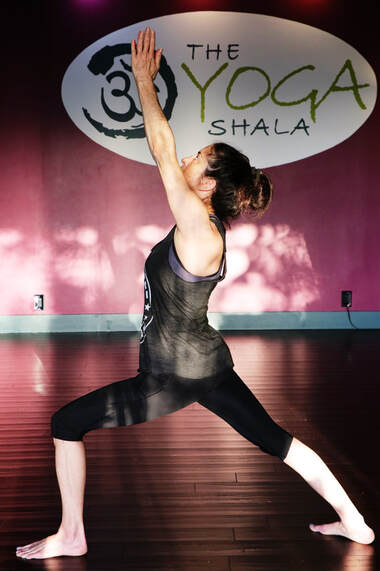 Hey gang! It’s Shelby here, your mid-morning Mysore teacher and General Manager. Can you all believe that we’re halfway through the summer? Where does the time go? This summer has been a bit challenging for me, and maybe you’ve had your own challenges as well. But I try to look at it as a time to grow, to learn about myself. Let me tell you my story: my bedroom has a leak, which has caused extensive water damage and mold. To make a long story short, my entire bedroom was ripped apart: part of the ceiling and walls were removed along with the entire floor. I slept on a mattress in my dining room for two weeks. Not fun! But what I did try to remember each morning was the word “equanimity”. Equanimity is defined as: mental calmness, composure, and evenness of temper, especially in a difficult situation. Isn’t that what we’re working on in our yoga practice? We try to keep the mind focused and calm, the breath steady, even as we move through difficult poses. Our bodies may feel uncomfortable at times, but we try to remain steady. What a great lesson for both on and off the mat: to remain equanimous in the face of adversity. Remaining calm during difficult times is a lifelong work-in-progress. I can’t say I was always equanimous throughout my bedroom ordeal. As I can’t say that my breath is always steady and my mind is always calm in each asana. But I know that I WILL return to the steadiness when I can. Equanimity is always waiting for us: it IS our authentic self. Forget "pot brownies." While this classic cannabis concoction is still immensely popular, there are plenty of other recipes that include cannabis plant on the list of ingredients.
They’re not only delicious, they also allow you to enjoy the benefits of THC and CBD. The world of edible cannabis has nearly limitless possibilities. Whether you’re looking for main courses, desserts, drinks, or desserts, there's a cannabis-inspired recipe to suit your needs. When searching for marijuana recipes, you'll find a couple of products on the list of ingredients, including: Canna-oil The process of creating canna-oil involves decarboxylating raw cannabis (basically, heating it in the oven), tossing it into a saucepan with oil, then straining out the plant material. What you'll be left with is a simple, potent base for cooking. Canna-butter The process of creating canna-butter is similar to the above process, and involves decarboxylating the weed in the oven, placing it into a saucepan with butter and water, straining the canna-butter, and refrigerating it. Get creative and try these amazing cannabis food recipes. Entrees Certain types of foods - including pasta, meat, and potatoes - are staples in many people's lives. And while entrees are meant to nourish our bodies, there's no reason why they can't tempt our palates too. Here are a few cannabis-infused dishes you absolutely need to try. 1. Cannabis-infused Gnocchi Pasta is a staple in most people’s diet. It’s filling, tasty, and affordable. Gnocchi, in particular, is especially hearty, and with this recipe from Munchies, you’ll also be left with the benefits of cannabis too. Ingredients: 3 baking potatoes 1 tbsp olive oil 1 egg, beaten 1 tsp baking powder 3 cups flour Weed-infused butter Grated Parmesan cheese (optional) salt Directions:
2. Canna-Chili Another classic dish, this recipe has been tweaked by Culinary Cannabis to include some cannabis. Ingredients: 2 15 oz cans black beans, drained 2 15 oz cans black-eyed peas, drained 2 15 oz cans dark red kidney beans, drained 2 sweet onions, chopped 8-12 plum tomatoes, chopped 1/3 cup dry red wine 1-2 pounds chopped beef 1-2 tbsp cumin 2 tbsp chili powder 1-2 tbsp dried chili flakes 3 tbsp Lea and Perrins 3-4 large tbsp marijuana butter Directions:
3. Pizza with Cannabis Oil Crust Classic pizza is getting an additional ingredients tossed into the mix thanks to this recipe variation from Cannabis.info. Crust Ingredients: 1 1/2 cups flour, sifted 2 tbsp cannabis-infused olive oil 2 tsp granulated yeast 1 tsp salt 2 tsp sugar Warm water Topping Ingredients: Tomato sauce Mozzarella cheese Basil Directions:
4. Mac, Cannabis & Cheese Swapping traditional butter with canna-butter makes this classic dish, tweaked by The Cannabist, somewhat unique. Macaroni Ingredients: 1/2 lb elbow macaroni or shells 1 tbsp canola oil 1 tsp salt Cheese Sauce Ingredients: 5 tbsp cannabutter 1/2 cup all-purpose flour 3 cups milk, warmed 4 oz mozzarella, grated 8 oz medium cheddar, grated 1 tsp salt 1 tsp paprika 1/2 tsp black pepper 1/2 tsp ground nutmeg 1 cup breadcrumbs 1 tbsp canola oil or canna-oil 2 oz cheddar, grated Onion Rings Ingredients: 1 cup canola oil 1 onion, peeled and sliced Directions:
5. Cannabis Sesame Honey Lime Chicken Wings Chicken wings are a classic dish to serve up at large gatherings. They’re relatively easy to make, and they’re a crowd pleaser. This particular recipe concocted by Cannabis Cheri takes a spin on things, tossing in a little lime juice, honey, sriracha sauce, and of course, cannabis. Snacks and Quick Bites It's tough to go between meals without putting a little something in our mouths and settling our grumbling tummies. With these snack recipes, you can keep hunger at bay, satisfy your cravings, and even add a little marijuana to your life to reap its many rewards. Give any one of these snack recipes a try. 6. Cannabis-infused Guacamole The classic avocado-based dip has been spun to include cannabis oil. Cannadish has created their own version of guacamole, and it’s pretty easy - simply mash some avocado with cannabis oil, then stir in chopped tomatoes, onions, cilantro and lemon juice (although as guacamole purists, we’d have to recommend using lime juice) . 7. Cannabis Popsicles Easy to make and totally refreshing, popsicles make the perfect treat on a hot sizzling day. This recipe from Original Weed Recipes combines mangos (or any fruit of your choice), yogurt, and little bit of what they refer to as “medicated” coconut oil. 8. Cannabis Fruit Galette A fancy name for pancakes, “galette” may be a simple recipe, but it’s taste is anything but. For this cannabis fruit galette recipe from Sous Weed, you’ll be filling the galette with a variety of fruits, blackberry jam, and lemon verbena. To top things off, a dollop of whipped cream completes a truly delectable dessert. 9. Rosemary Mashed Potatoes with Cannabis Eat Your Cannabis has put its own spin on traditional mashed potatoes by including canna-butter in place of olive oil or animal butter. Ingredients: 4 large potatoes, cubed 1/2 cup canna-milk 4 tbsp cannabutter 2 tbsp fresh rosemary, minced Salt and pepper Directions:
10. Cannabis Artichoke Dip You’d be hard-pressed to find someone who doesn’t like artichoke dip. Just about anything can be dipped into this dish, making it a universal dip to serve with various appetizers. Wake and Bake’s take on artichoke dip calls for a few cashews, mustard, swiss chard, artichoke hearts, and some marijuana-infused walnut oil. Desserts No meal is complete without a sweet treat to top things off right. Try these marijuana-inspired dessert recipes to satisfy your sweet tooth. 11. Cannabis Caramels You might be able to find traditional caramels at the grocery store, but you won’t likely find any infused with cannabis. This easy-to-make recipe from Original Weed Recipes combines canna-butter along with corn syrup, brown sugar, and vanilla for a tasty treat. 12. Cannabis Snickerdoodles Snickerdoodles might be the most commonly baked cookies in the world. Original Weed Recipes’ version takes the classic recipe known to millions of grandmothers and simply substitutes regular butter with canna-butter. Ingredients: Canna-butter Cookie flour 1 egg Sugar and cinnamon (to roll the cookies in) Directions:
13. Cannabis Donut Holes Just as good as the whole donut, donut holes are just enough to satisfy our sugar cravings. This recipe from Munchies adds canna-butter to the mix, along with conventional ingredients like flour, sugar, and eggs. 14. Chocolate Cannabis Peanut Butter Bars There may never be a more perfect union than chocolate and peanut butter, and these bars from Original Weed Recipes cleverly sneaks THC-cannabis flower alongside the chocolate, peanut butter, sugar, flour, and eggs. 15. Cheesecake with Cannabis A delicacy in the dessert sphere, cheesecake is a timeless treat that can take on various forms, including chocolate, fruit, or simply plain. The Weed Scene’s take on cheesecake involves adding canna-butter, in addition to cheesecake recipe staples like cream cheese, sugar, flour, and, of course, the graham cracker crust. Final Thoughts With so many different recipes out there with THC-laden or CBD-rich marijuana, there's no reason why you can't enjoy your favorite dishes or desserts while taking advantage of the medicinal and wellness benefits of the plant. Use your imagination, get creative and give any one of these cannabis-inspired recipes a try! This article originally appeared on myfoli.com The word “spirituality” means different things for different people. For some, spirituality is associated with religion and is tied to concrete rites and rituals. For others, meaningful activities like swimming, making art, and walking through the woods brings on a spiritual experience. For the most part, though, the word spirituality has become as ambiguous and vague as the word “the,” and is often stigmatized by associations to “hippy-dippy” new-age philosophies, patchouli, dreadlocks, and yoga pants.
Spirituality seems to have become confused with religion, as it is common to now associate as “spiritual” or “not spiritual”. However, at its core, spirituality is a sense of connection to something bigger than ourselves, and is not an ideology to believe or not believe in. Spirituality is, in fact, what gives life a sense of meaning and purpose. Practicing spirituality has scientifically-validated benefits, making it important for each and every person, not just yogis in the Himalayas. If you find yourself skeptical about the necessity of spirituality, check out these 10 reasons why spirituality matters for the average Jo(sephine): 1. Be Present The spiritual life is based in the present moment, as the present moment is the only real moment; the past and future are concepts in the mind. When living with our minds in the present moment, we function with greater focus, clarity, and spontaneity. We also feel greater levels of joy, as happiness is only accessible in the here and now. 2. Get Smart Studies show that many spiritual practices, especially meditation, result in increased grey matter area in the brain. Among its many benefits, regular meditation leads to increased cognition, improved focus, attention, and ability to perform under stress, and higher levels of emotional intelligence, all of which contribute to enhanced work performance. 3. Be Healthy Most spiritual paths and religious traditions recommend abstaining from behaviors and substances that are detrimental to health, such as drinking, smoking, using drugs, committing crimes, and harming others. Many paths, such as Ayurveda and Buddhism, even make dietary recommendations, which can lead to a lower body weight and lessened risk for chronic health problems. 4. Let Go of Grudges A basic tenet of most spiritual paths and traditions is forgiveness. When we forgive ourselves and others, we are able to let go of blame, negative feelings, and anything else holding us back from moving forward in our lives. In fact, studies now show the positive health benefits of forgiveness, which include lowered risk of heart attack, lowered blood pressure, improved cholesterol levels, and reduced levels of pain, depression, anxiety, and stress. 5. Bounce Back Faster Studies show that people who feel a sense of spirituality have greater resilience to hardships. Those with a spiritual outlook have an easier time moving through challenges by finding meaning in difficult situations. High resiliency is also a trait associated with the most successful people in the world. 6. Make Better Decisions Decision-making is an area that many people struggle with. By simply identifying a set of values that we feel aligned with, we can make decisions that help us feel connected to the greater whole and with a sense of purpose. Spiritual paths also tend to support the development of faith and trust, which helps with stress-reduction in times of uncertain decision-making. 7. Enjoy Amazing Relationships Research in social science demonstrates that humans are neuroscientifically hardwired for connection, and that connection is what brings meaning to life. Interconnectedness, which is at the core of spirituality, helps us to recognize the shared human experience and feel compassion for others. And when we feel compassion, we enjoy the company of others more and find it easier to find common ground. 8. Release Stress and Anxiety When we feel a sense of connection to a higher power, we experience mental and emotional freedom. Personal spiritual practices, such as yoga, meditation, running, gardening, and other meaningful activities, are all correlated with lower levels of stress and tension. 9. Enhance Creativity Mahatma Gandhi once said, “True art takes note not merely of form but also of what lies behind.” Many of the great artists in history attribute their creations to a higher power. When we are relaxed and in the present moment we can more easily experience the state of flow, which leads to more spontaneous ideas and greater levels of creativity. 10. Be Happily Alone In our modern day culture, it is all too easy to never be alone. If you walk into any restaurant or cafe and look for the people sitting by themselves, chances are they will be absentmindedly eating their food while scrolling through Instagram and sending Snapchats to people in other locations. People in this day and age find it difficult and even painful to be alone, both metaphorically and physically. However, when armed with spirituality, being alone is a gift, offering an opportunity to look inward and know oneself. Because, as almost all spiritual traditions teach, our Self is all we truly have. Spirituality teaches us how to ENJOY being alone, so that we can truly enjoy being with others. Full article originally posted on ArtofLiving.com By Amanda Turner In a world filled with distractions, trying to find a way to have a zen session without something popping up to break us away from self-care in inevitable. Taking time to have a zen session each day allows you to clear your mind of the clutter and distractions that happen each day, so finding a way to squeeze it in and not be distracted is essential. To discover ways to dedicate time to meditation, take a look at these tips to avoid distractions.
Prioritize Self-Care It is essential to dedicate time each day for meditation and self-care, so treat it as such. Whether you make a point to have your zen session every morning or every night when there are fewer distractions, or you plug it into your calendar to make sure you don’t overbook yourself, make sure that self-care is considered a priority for you. Use “Do Not Disturb” Whether you use your phone for guided meditation or an app that walks you through a yoga sequence - it is hard to not peek your eye open when you hear that “ding” letting you know that you just received a text or an email. Even the most disciplined individuals will find it hard not to take note of your phone making a sound during meditation. Most modern phones have a “Do Not Disturb” option to keep those notifications from happening during your moments of zen. Create a Routine Did you know that when you create a routine, your mind and body will automatically start to get used to tuning into certain tasks at certain periods of time? Whether you want to create a routine for creativity, physical fitness, or for meditation, your body will begin to look forward to these tasks at certain periods of time each day. Create a routine for your mind and body so that it will tune into “zen mode” for whatever time you decide to dedicate a zen session during the day. Get Rid of Excess Noise During your zen session, make sure that there is as little excess noise as possible. If possible, call a repairman to fix any noisy or faulty appliances so that they don’t distract you throughout the practice. On the same note, you may experience your family and friends that are staying with you feeling the liberty to interrupt your session without understanding its importance. If you have family that is prone to opening the door during your zen session, consider putting a note outside the door to let them know this is “you time” to avoid having to pause your time for meditation. Now is Not the Time for Multitasking Your zen session is a time to clear your mind and focus on being in the present. This helps mitigate stress, anxiety, and even depression. Now is not the time to try and do yoga while also playing with your child or dog. When you prioritize your zen session, make sure that you are not multitasking to also squeeze in other tasks at the same time. With continued research, fans of cannabis - both old and new - are coming to realize how useful CBD can be as part of an overall wellness regime.
Cannabis is not just something that "stoners" use on a recreational basis in an effort to get high. While it certainly can be consumed for recreational purposes, cannabis has so many more uses. In fact, science continues to show us how the various cannabinoids in cannabis - including CBD - play a key role in health and wellness and serve as a natural alternative to traditional remedies for various ailments. With continued research, fans of cannabis - both old and new - are coming to realize how useful CBD can be as part of an overall wellness regime. How CBD Helps Your System CBD - or cannabidiol - may have some incredibly promising cannabis health benefits to the mind and body, but how exactly does it work to do this? CBD's ability to promote better health and wellness stems from its interaction with the endocannabinoid system of the body. This system is tasked with regulating brain, endocrine, and immune functions, and influences various experiences in the body, including appetite, pain, stress, anxiety, inflammation, and mood, among others. More importantly, the system is responsible for maintaining homeostasis - or balance - in the body that's needed to keep the body healthy and free of disease and ailments. The endocannabinoid system is made up of endocannabinoids, which are neurotransmitters that bind to cannabinoid receptors located throughout the central and nervous systems. The body produces its own cannabinoids that bind to these receptors, but cannabinoids from outside sources - such as CBD and THC from the cannabis plant - can also serve a similar function. When cannabinoids interact with the receptors of the endocannabinoid system - either directly or indirectly - they can relieve pain, minimize inflammation, improve mood, promote better sleep, and alleviate stress and anxiety. Why Incorporate CBD Into Your Wellness Routine? As already mentioned, the endocannabinoid system's main job is to maintain homeostasis in the body. The body's internal conditions must constantly be controlled and in proper balance because the cells depend on this environment to function properly. If the conditions are not optimal, certain processes will not function the way they should, and that can lead to disease. CBD can help the endocannabinoid system maintain this balance and help the body adapt to outside stressors. As such, adding this cannabinoid to your daily wellness regime can help you boost your overall level of health and wellness. Here are four main areas in which users can take advantage of the benefits of CBD. Promote Better Sleep Good sleep is integral to overall health and wellness. Lack of proper sleep can bring about a myriad of health issues. In fact, not getting enough quality sleep can lead to high blood pressure, obesity, diabetes, and even heart disease. Many people go to great lengths to try and improve their sleep patterns, including taking sleep medications. However, CBD may be an effective natural alternative to pharmaceutical meds. Studies have been conducted on CBD and its relationship with sleep, revealing that the cannabinoid can encourage better sleep and may be able to treat specific sleep disorders, including insomnia, sleep apnea, and narcolepsy, to name a few. Induce an Anti-Inflammatory Effect Inflammation in the body can lead to a host of issues because of the damage it causes to the cells and tissues as a result of oxidative stress from free radicals. A high level of oxidative stress can cause serious damage, even to our DNA. Recent research has shown a link between CBD and reducing inflammation. More specifically, CBD can mimic how the immune system works to alleviate inflammation in the body. By reducing inflammation, a number of ailments can be relieved, including pain and skin conditions. Reduce Stress and Anxiety Perhaps the most well-known reason for introducing cannabis into a daily regime is to reduce stress and anxiety. Cannabinoids' role in alleviating stress and anxiety stems from their interaction with certain receptors that influence serotonin. Low levels of serotonin in the brain can cause anxiety. Medications that target serotonin levels - known as selective serotonin reuptake inhibitors (SSRIs) - work to increase the level of serotonin in the brain by blocking reabsorption of the neurotransmitter. This, in turn, can alleviate stress and anxiety and boost a person's mood. CBD and THC can mimic the work that SSRIs do to make serotonin more readily available, thereby helping to relieve stress and anxiety and help patients feel better. The cannabinoids do this by enhancing 5-HT1A transmission and may affect serotonin faster than medications. Promote Healthier Skin CBD's anti-inflammatory and antibacterial properties are particularly useful when trying to improve the look and feel of the skin. More specifically, it can help alleviate certain skin conditions, such as acne, psoriasis, and eczema. Studies have found that CBD and THC serve as effective agents in the function of sebaceous glands, which secretes "sebum," an oily substance which can clog pores and cause acne flare-ups. Dilation of CBD topicals can minimize the secretion of sebum and therefore help keep the skin free and clear of breakouts. Different Ways to Incorporate CBD Into Everyday Life There are various ways that CBD can be used and implemented into your daily regime, depending on your comfort level. Here are a few formats that CBD is available in: Edibles. CBD can be quickly and easily added to beverages and foods and ingested orally. Whether you add the product yourself and create your own recipes or purchase edibles that are already infused with CBD, edibles are an easy and convenient way to add CBD to your daily regimen. Tinctures. Another simple way to consume CBD is to use tinctures that can be taken sublingually, meaning under the tongue. The great things about tinctures is that they provide CBD in a concentrated form that bypasses the digestive system and takes effect more quickly once it is absorbed through the mucous membrane under the tongue. Topicals. Individuals who are looking to alleviate specific pain points may find topicals more convenient, as they can be applied and rubbed onto the exact areas where the pain is being experienced. Topicals are also useful for those who wish to apply them to the skin as a means to boost skin health and combat acne. Vapes. To quickly take the edge off and alleviate stress or anxiety, vapes tend to work quite well. Consuming CBD in this manner also takes effect rather quickly because the CBD does not have to be digested before it starts working. Capsules. An easy way to take CBD is in capsule format. That said, exact dosing might be a bit more difficult. Final Thoughts CBD continues to show great promise in the world of health and wellness. With so many different applications - including promoting better sleep, improving skin health, alleviating anxiety, and combating pain - CBD certainly has a bona fide place in this sphere. And with a variety of different modes of application and consumption, CBD can be implemented according to each individual user's comfort level. This article originally appeared on myfoli.com  In Sanskrit, Alternate Nostril Breathing is called Nadi Shodhana Pranayama, which translates to “subtle energy clearing breathing technique”, and it has many benefits. Alternate Nostril Breathing helps calm the mind, reduce anxiety, and bring a feeling of relaxation to the entire body. It also relaxes the mind in preparation for meditation, which can be helpful for those struggling to settle down before meditating. When performed for just a few minutes, Alternate Nostril Breathing can instantly reduce stress and fatigue, and is a quick and efficient practice to do before high-stress situations such as job interviews and public speaking engagements. How To Do Alternate Nostril Breathing
The Benefits
3 Things to Remember
By Amanda Turner As the seasons change, it is easy to become overwhelmed and feel as though you are forced to passively accept the challenges that come your way. When that overwhelming feeling sets in, you may have reached a state of imbalance that seems impossible to get out of. Fortunately, balancing your life does not have to be a mystery. Here is how to create a balanced life in a season of chaos and stress:
Preventative Care Ayurveda, the ancient, sister-science of yoga, offers us countless recommendations for how to live a healthy, balanced life. The preventative care that this system of health encourages works to prevent overwhelm and instead keep you grounded and at ease for the long-term. A few general recommendations include creating routine and giving yourself time for self-care on a regular basis. Healthy Lifestyle One of the best ways to reduce stress is to incorporate gentle exercise into your schedule. Yoga, swimming, even a walk in the park with your dog can be excellent ways to get active in a non-competitive environment. If possible, consider exercising with a friend or family member, so you can enjoy quality time together while creating space from the challenges of your day-to-day. Another important factor in balance is ensuring you eat good food and get enough sleep. These are two of the most basic needs that often get brushed aside when life gets hectic. Instead of resorting to take-out and staying up well past midnight, give yourself the gift of a mindful meal at home and a solid night of slumber. Home Maintenance When life feels out of control, the last thing you want to worry about are home repairs. Make sure your home is not on your to-do list by keeping up with home maintenance and scheduling any repairs that need to be completed. When your home is running smoothly, your life will feel easier. Clear Intentions If you have a growing--or endless--to do list, it’s possible that the weight of these requirements is contributing to your daily stress in a very negative way. Instead of constantly worrying about all of the things that need to be done, set clear intentions each day for two to three tasks that must be completed. This will help you focus on what is a true priority, and relax about all the rest. Distinct Boundaries Finally, check in to see where your focus is primarily resting. If you are working more than feels comfortable, give yourself more free time. On the other hand, if you have been putting off more work than you should, get yourself back into a consistent routine. Setting clear boundaries for your work/life balance will ensure that you stay aligned to your goals, without going overboard, in one direction or another. When you’re in the thick of stress and chaos, creating a balanced life can feel impossible. However, it’s never too late to incorporate a few of the above tips. As you integrate these changes into your life, notice how formerly frustrating situations can seem less intense and your life can feel more at ease. Preventative Care A preventative approach to maintaining the body assists in maintaining a healthy lifestyle for years to come. Maintenance-wise, our car requires regular tune-ups and yearly maintenance. Why don’t we tune up our bodies? In addition to regular check-ups with a physician, Ayurveda emphasizes a holistic, self-care approach to maintaining a healthy lifestyle. Ayurveda’s emphasis on preventative healing measures are decidedly effective and teach ways for practitioners to deal with issues before they begin. According to Ayurveda, there are six stages of ill health. They begin with imbalance and gradually increase to disease. Like weeding, Ayurveda emphasizes clearing the flower bed before the weeds take over. The preventative Ayurvedic approach is built on four pillars: food, lifestyle, rejuvenators & supplements. When a person is in poor health, they are in need of a different approach that is meant to address imbalances with holistic healing practices and balancing supplements. Skilled practitioners of Ayurveda use pulse assessment to determine which specific supplements, food and lifestyle practices will restore balance. Balance through Ayurveda improves a person’s health, energy, and youthful vitality. The four keys to a healthy lifestyle: 1. FOOD Whether you are a vata, pitta or kapha person, the most important element for maintaining balance is following the diet that suits your constitution. A healthy person who knows his natural constitution will be able to follow a diet best suited for maintaining balance. A person in poor health can learn what sort of dietary changes will help restore balance. What we eat goes to our stomach, which is like the root of our system. Like a tree, which derives its nutrients and energy from its root system, humans derive their nutrients and energy from what is put into the stomach. From our stomach, our entire body is nourished. As the old saying goes, “You are what you eat.” Finding the right diet, based on our constitution, is the first and most important step in attaining a healthy lifestyle. Idli (see photo) is such a nutritious meal because it is actually a complete protein and the fermenting process involved in preparation stimulates digestion. 2. LIFESTYLE Finding a recommended lifestyle routine is vital to maintaining balance and correcting disparity. After food, lifestyle comes as the most important way to stay in balance. A healthy lifestyle includes: • A routine of health • Waking and sleeping at regular times • Going out for regular exercise, according to your constitution • Self-massage with suitable oils • Centering yourself with a few minutes of stillness and meditation • Light yoga Chyawanprash (see photo) is one such rejuvenator used in Ayurveda, especially during the colder seasons. 3. REJUVENATORS Rejuvenators, rasayana, are a variety of ancient supplements that promote the rejuvenation of the body and the maintenance of a young, vital, dynamic and energetic self. Rejuvenators work to make the body feel young and refreshed. Rejuvenators are not simply food, they are powerful solutions to problems that ail many of us — solutions to whatever upsets balance and health. Concerning the many factors that upset balance and health, there are equally as many rejuvenators to combat these problems. 4. NATURAL SUPPLEMENTS There are many traditional Ayurvedic herbal supplements that are used in a variety of ways. They include spices in our food and herbs that promote detoxification of the body. Choosing the right herbal supplements is a matter of understanding both one’s constitution and one’s imbalance. Whether in need of detoxification or wanting to combat stress, lethargy, or poor digestion, Ayurveda has numerous herbal supplements to help promote longevity and maintain a healthy lifestyle. Now you’re set knowing the four key tools of Ayurveda. These tools can be used with a knowledge of your nature to make choices that lead to greater balance and health. Laurie Larson is a freelance writer based out of North Carolina. She writes on home, health, and lifestyle topics to help others live a happier and healthier life. 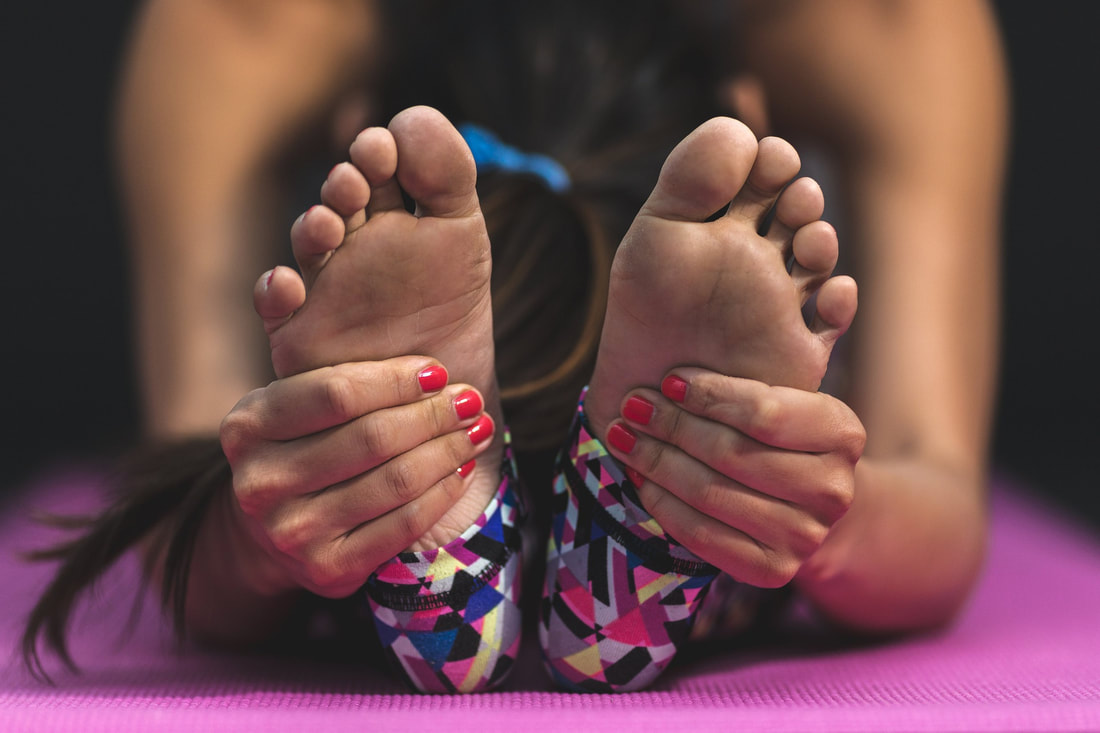 Image by Pixabay If you’ve been practicing yoga for some time, you know the long list of benefits: it helps you feel better, it’s a great way to start your mornings energized, and your muscles are stronger and more toned. That’s not where it ends, though. There are many benefits of yoga that are not so readily apparent. For example, regularly practicing yoga can help improve your respiration, keep your metabolism balanced, protect you from injuries, and even improve your sleep. Yoga can improve my sleep? It sure can. Now, we aren’t talking about doing a full Ashtanga practice before bed, but doing light yoga practices such as pranayama and meditation could be just what you need to take your ZZZs to the next level. If you don’t already, you should consider adding these relaxing yoga practices to your regular nighttime routine. Not convinced? You might be after reading these four benefits of performing yoga before bed: 1. It relieves stress Stress is one of the leading causes people can’t sleep at night. How are you expected to peacefully fall into sweet dreams when you can’t stop replaying the day’s events or panicking over encroaching deadlines? If it’s not bad enough that it makes the falling asleep process challenging, it also ruins our deep REM sleep, leaving us to wake up without feeling restored. Cue the calming powers of yoga and meditation. Yoga teaches us to focus on our breath and live in the present moment, focusing on the here-and-now to shove worries away. By keeping this mentality right before bedtime, you’ll let your mind clear out and prepare for great sleep before you even make it in the bed. By performing pranayama exercises before bedtime, you’ll be able to gain control over your breath effectively clear your mind. 2. It reduces your pain Pain is another leading disruptor of a good night’s sleep. If you can’t get comfortable at night due to your neck, back, or other muscle pain, there’s no way you’ll be able to rest peacefully. The good news is, yoga happens to be a great option for relieving your pain. In fact, some people report a preference for yoga as a treatment for their pain over traditional medications. Incorporating some gentle yoga stretches before bedtime will help stretch out your muscles, ease your pain, and prepare your body for a comfortable night of sleep. You don’t need to perform a whole flow. Start with upside-down relaxation. Sit facing a wall, lie back with your legs extended up the wall, rest your arms palms facing up by your sides, and focus on your breathe for up to two minutes. Other stretches you should incorporate before bed include winding down twist, child’s pose, and hugging your knees to your chest in rock-a-bye roll. 3. It gives you a better attitude about your rest Do you excitedly crawl into bed each night, or do you push it away and often de-prioritize it for other tasks? Unfortunately, many people belong to the latter group. When you practice yoga, it helps you learn to appreciate moments of rest. Instead of neglecting your sleep, practicing nighttime meditation will help you embrace the importance of quiet, restorative moments for restoring your body. 4. It improves your sleep quality The biggest benefit to performing yoga before bedtime is the improvement in your sleep quality. Taking the time to relax in a meditative state while you stretch out your body, release tension, breathe deeply, and clear you mind sets you up perfectly for a night of deep, quality sleep. If you’re ready to see what performing yoga before bedtime can do for you, start by adding it into your nighttime routine tonight! Stress is one of the leading causes people can’t sleep. For more info on improving your Zzzzz's, take a look here:
https://www.sleepadvisor.org/stress-and-sleep/ Written by Alyson Calla. Exclusive for theyogashala.org The word ‘detox’ is often used as a synonym for weight loss diets, but what the health and wellness industry often get wrong about detoxification is that it is not the same as restrictive eating or going on juice fasts. What ‘detoxification’ really means? The basic definition of detoxification is to free the body of toxins, not of calories. Toxins, or free radicals, are harmful chemicals from the environment that enter the body through several ways, one of which is through the food we eat. Live Science explains that the presence of free radicals may result in the destruction and mutation of cells which is what happens with the growth of tumors. Researchers also believe that they are linked with a host of chronic illnesses including macular degeneration, cardiovascular disease, inflammatory diseases, and certain types of cancer. Where does veganism come in? The main sources of toxins in the standard diet are: - Deep fried foods that are high in trans and saturated fats - Dairy products - Produce grown with pesticides - Processed and canned foods - Meat Healthline points out that processed meat and artificial trans fats cause inflammation. While inflammation is essential for healing, the prolonged state has been thought of by the medical community as the root of all disease. To reverse the damage caused by free radicals, eat plant-based foods that are high in anti-oxidants. Some examples are: - Leafy greens such as kale and spinach - Different types of berries - Fruits such as watermelon, apricots, and oranges - Lentils, beans, and grains - Other vegetables including artichokes and bell peppers As long as it is organic, a vegan diet abundant in antioxidant rich foods and other essential nutrients will help cleanse your body of unwanted substances. Signs of toxicity Frequent headaches, noise sensitivity, cognitive impairment, inflammation, and reduced immune function are some of the symptoms of toxin concentration in your body. If you’re someone who’s prone to breakouts, one of the known causes of acne is inflammation caused by a poor diet. For instance, Natalie Portman revealed that finally going vegan and cutting out eggs and dairy eliminated her problems with adult acne. Dairy in particularly is an inflammatory as it contains a lot of excess hormones which can trigger a reaction and in turn, pimples. A few other symptoms are fatigue as well as chronic muscle and joint pain, which are also linked to inflammation. Argentine international soccer player Sergio Aguero suffered from muscle injuries which he attributed to a diet rich in meat, sugar, and pasta. After cutting out these inflammatory foods, the Argentine striker experienced significantly less injuries and improved his game. Similarly, if your back is constantly in pain or your joints are swollen, it might be time for a diet change. The bottom line A lot of the food we eat - even some plants when covered in pesticides - contain toxins. While the body’s immune system is capable of eliminating toxins naturally, too much of it can cause the immune response to slow down and become overpowered. This means that people who consume food that have high amounts of these harmful chemicals are more prone to disease. In order to cleanse your body of harmful substances, a well-rounded vegan diet is the closest diet for detoxification. This is synonymous with what The Yoga Shala referred to as mindful eating in a previous article. You can still enjoy your foods, as long as you practice awareness of what you feed your body. 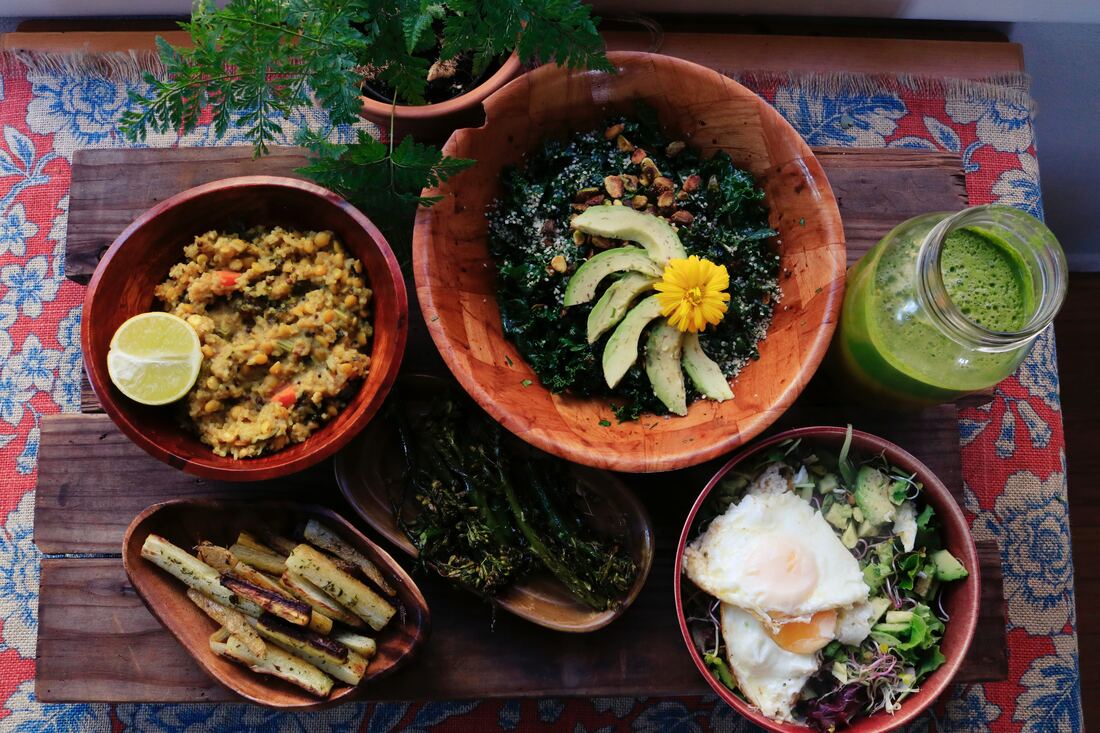 The concept of Ayurvedic (“ayus” = life, veda = knowledge) meaning “whole body” was developed over 3,000 years ago in India. Ayurveda medicine is the belief that wellness begins with a balance of the mind, body, and spirit to promote good health. Believers say every human is made of space, air, fire, water, and earth. Combining these elements together will form three separate energies called Vata dosha (space and air), Pitta dosha (fire and water), and Kapha dosha (water and earth). Each energy participates in a separate function on the body.
For those who may not be as educated on the origins and beliefs of Ayurveda, there are some basic ways to incorporate this way of living into your current daily routine. We’ve compiled a list of essentials you can use moving forward to practice for yourself! Sweating When you sweat, your sweat glands release impurities out of the body. Sweating also aids your body in losing water weight while increasing your circulation. Running at a steady pace is the perfect way to get your blood pumping and sweat flowing. The largest detoxification organ is...your skin! Sleep Research shows a direct correlation between lack of sleep and weight gain. Adults sleeping four hours a night versus sleeping 10 hours a night found their hunger and appetite increased. More sleep means staying at a consistent weight and having a clear mind, which in turn improves performance throughout the day. Try taking a warm bath before bed to relax the body and mind while also preparing the body for a good night's rest. Add Epsom salts or essential oils to soothe your muscles. Stay Hydrated It’s important to drink fluids throughout the day to hydrate the body. Cold water actually negatively impacts your digestion, so try to stick with warm water for meals. Ginger Tea is known as the “wonder herb” in Ayurveda as it helps with your daily digestion while the ginger root promotes joint health. Try to have at least 1 cup a day. Mindful Eating Slower your chewing while eating meals. Taking your time will send a signal to your stomach so it knows when it’s full which will help you avoid overeating. Stay away from emotional eating or eating when you’re bored. This can lead to guilt and a decrease in your good digestion flow. Occupy your mind with something else like reading, exercising, or talking to friends. Try to enjoy your food in silence or in an area that’s comfortable and at least semi-quiet. by Sheila Olson Finding ways to balance a fitness routine with overall self-care can be tricky, especially if you lead a busy lifestyle or are dealing with stress or depression. It’s essential to your overall health, however, to achieve that balance and maintain it in a healthy way. Since self-care can mean any number of things—from finding ways to relax to learning how to eat more balanced meals—it doesn’t have to be difficult to fit it into your life. Think of the things that make you happy and incorporate them into your daily routine alongside a workout program. Fitness goals differ from person to person, and what works for your friend may not work for you. Keep this in mind moving forward to avoid becoming overwhelmed and to stay motivated. The best way to work out a new routine for your physical health is to merge it with things you already enjoy doing, such as swimming or spending time with a loved one. Here are a few tips on how to incorporate fitness and self-careinto your daily routine. Take it easy Particularly if you are starting a new routine after being inactive for a while, or if you are in recoveryfor substance abuse, it’s important not to overdo it. Start out slowly and work your way up to avoid becoming overwhelmed or sustaining an injury. You might begin with a low-impact exercise, such as walking or simple yoga, and then add in different elements such as weight training or cardio. Eat better Part of physical fitness is learning how to eat well-balanced meals that will give you energy and keep you feeling good throughout the day. It’s also about finding the best way to keep yourself satisfied between meals, such as bringing small, resealable bags filled with fresh veggies, nuts, and dried fruit to work instead of relying on vending machines for a snack. Work out a meal plan that makes sense for you and your family and stick to it as closely as possible through the week. Not only will you feel better, it can also save you money! De-stress Taking care of your mind and body can be difficult if you’re stressed to the teeth, so finding a way to relax is imperative. You can actually incorporate something that makes you feel good with an activity that gets your heart rate up. Think along the lines of gardening, swimming, running around the backyard with the kids or dog, or playing a sport. Merge a hobby with something activeto get the most benefits. Create an at-home gym If you have a busy schedule or are coping with depression or anxiety, it can be difficult or impossible to get to the gym several times a week. One of the best ways around this is to create your own home gym, complete with all the things you need for a good workout. You don’t need to break the bank to do this. You can add a yoga mat, resistance bands, a stability ball, and some free weights for a small, manageable workout space in the comfort of your own home. Get the dog involved If you have a pet, there are several ways you can focus on your fitness and self-care routine and involve himat the same time. Dogs are loyal companions who love going for a run or having playtime outside, and they’ll keep you motivated even when you’re feeling tired. Take your pup to the dog park, head to the beach for a run, or just have some playtime outside after work. Since spending time with animals can reduce stress, it’ll work wonders for your mental health as well as your physical health. Finding ways to incorporate mental and physical fitness into your busy routine isn’t always easy, but doing so can help you live a more fulfilled life and can aid in reducing depression and stress, even if you’re in recovery. Talk to your doctor before beginning any rigorous routine and start out slowly to avoid injury. |
Archives
March 2024
Categories
All
|

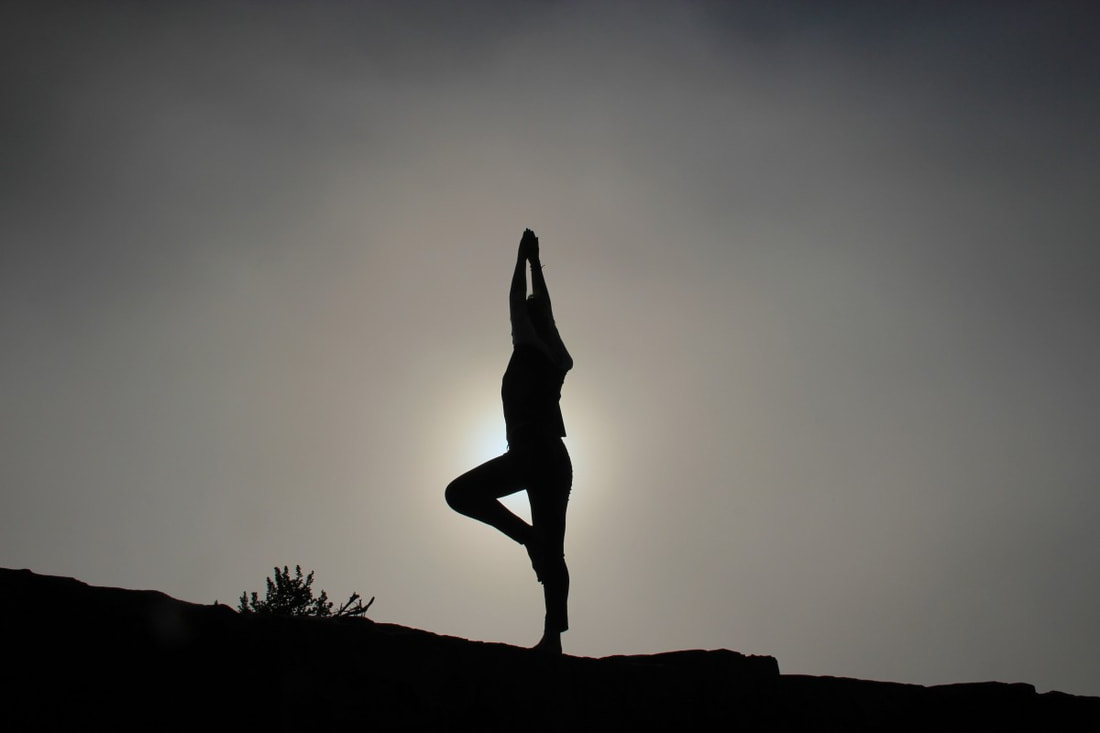

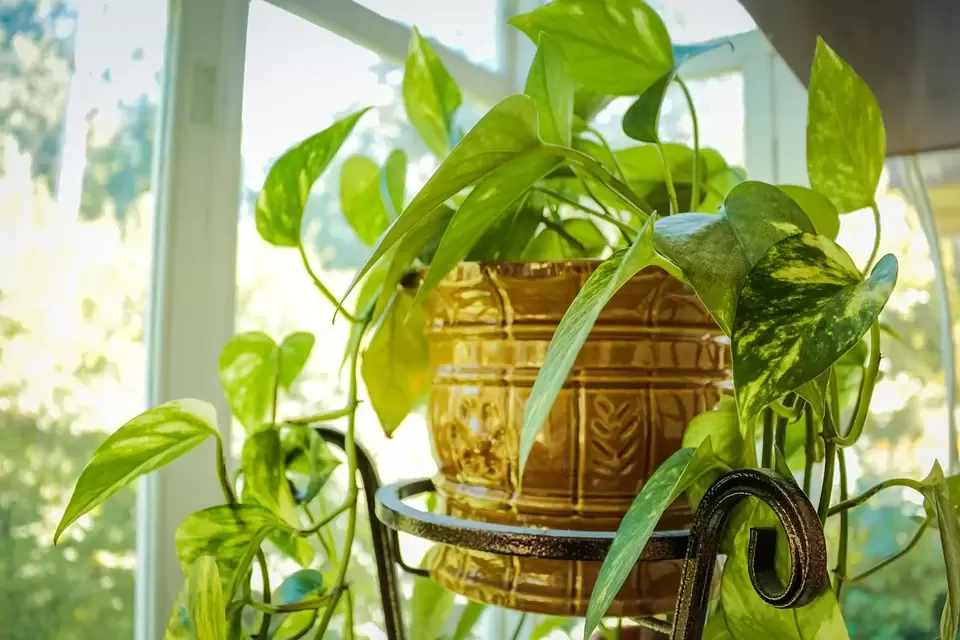
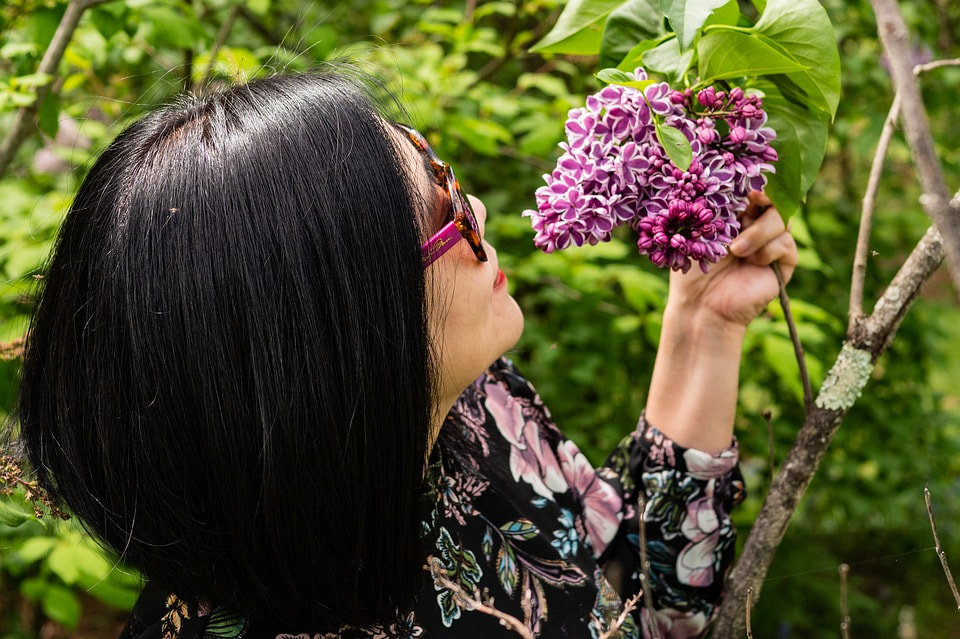
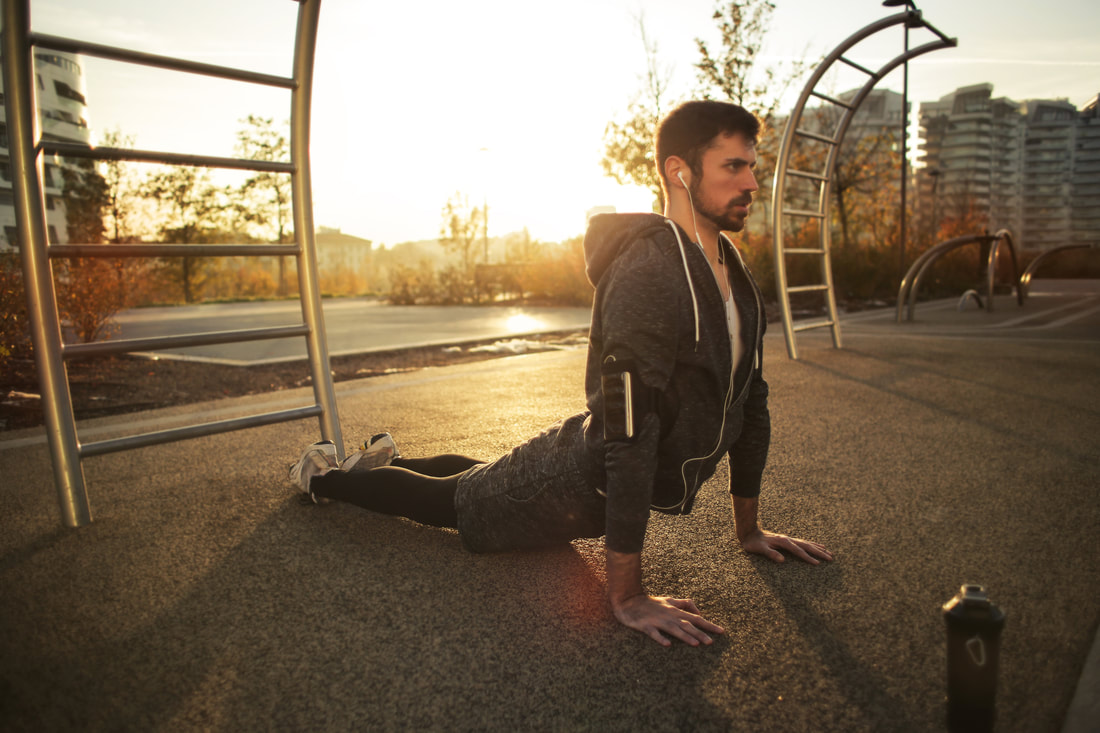
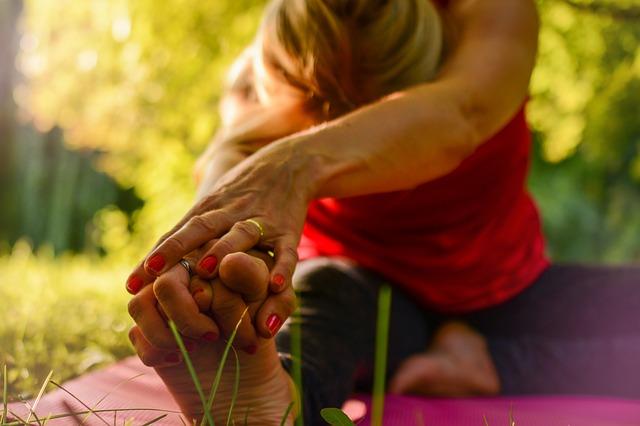




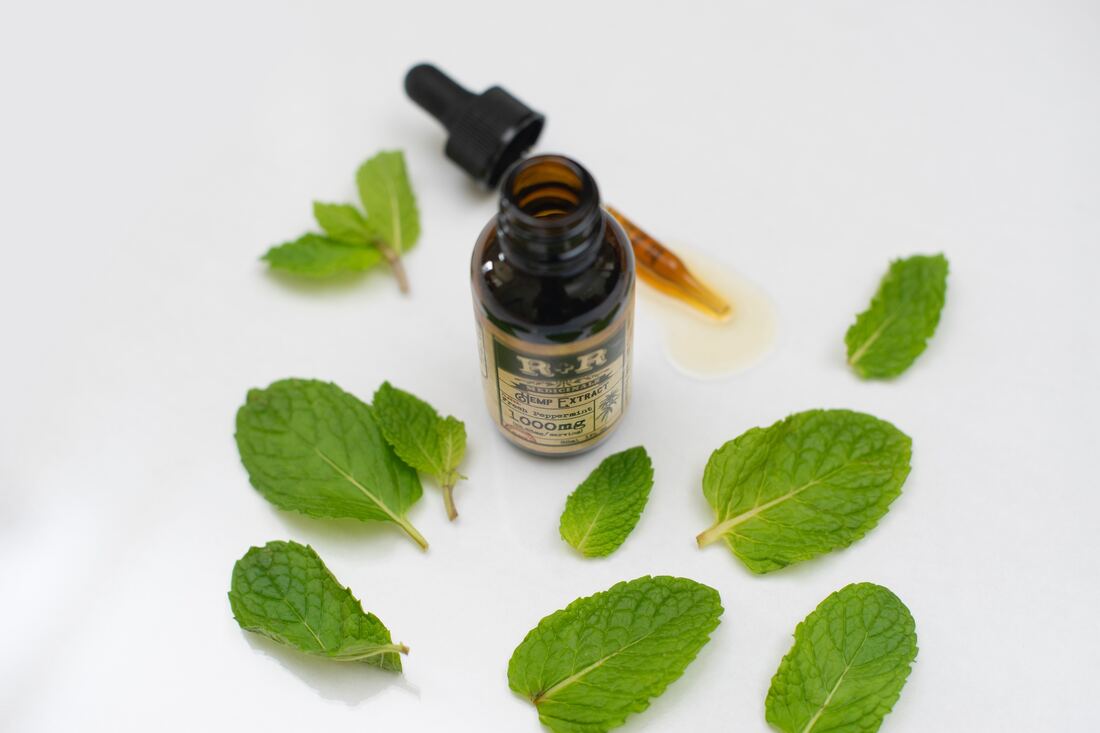

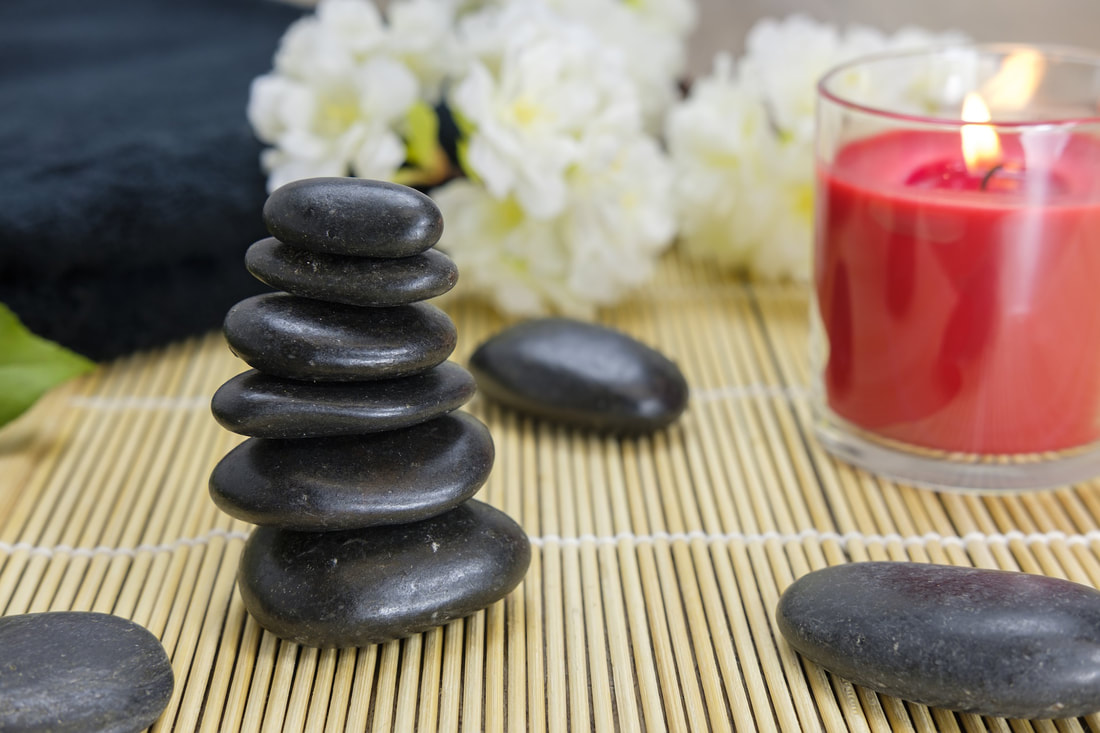
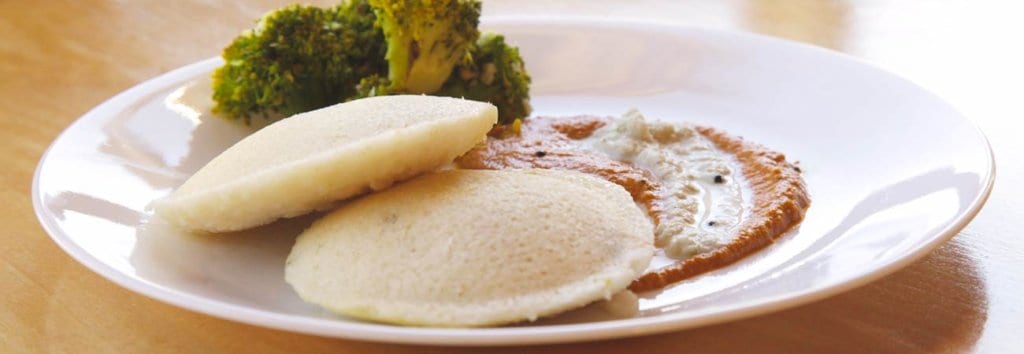
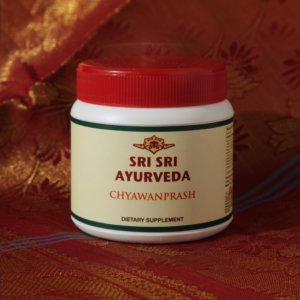
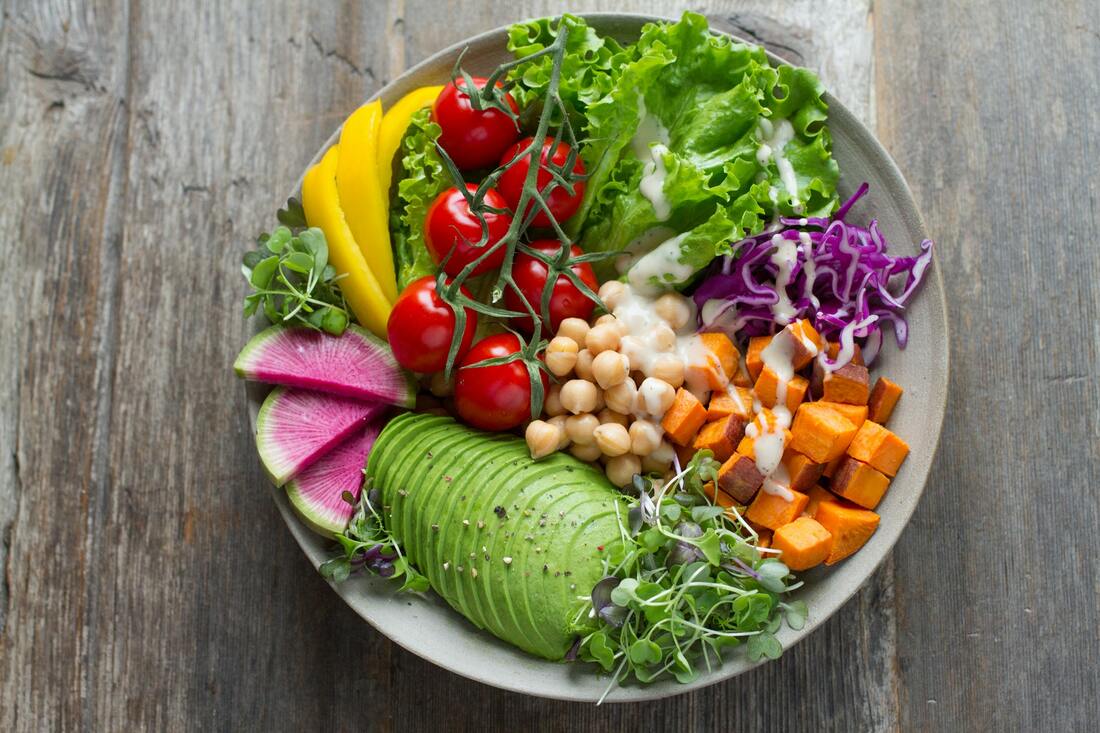
 RSS Feed
RSS Feed
